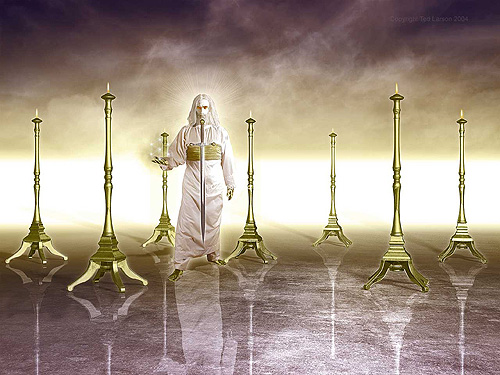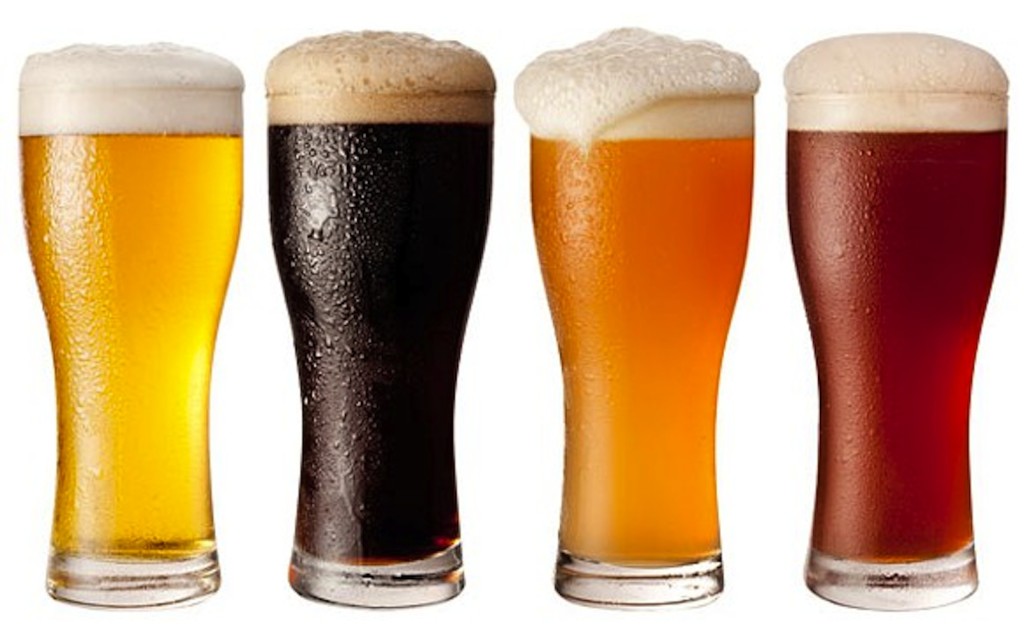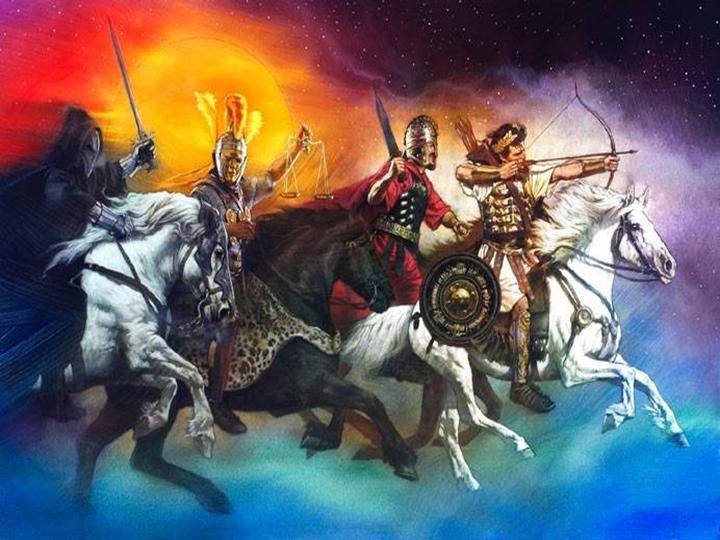666?
 Whenever the Book of Revelation is mentioned, I find non-Christians always ask about “666” which is mentioned in the book. What’s it all about?
Whenever the Book of Revelation is mentioned, I find non-Christians always ask about “666” which is mentioned in the book. What’s it all about?
"We are travellers…not yet in our native land" – St. Augustine
 Whenever the Book of Revelation is mentioned, I find non-Christians always ask about “666” which is mentioned in the book. What’s it all about?
Whenever the Book of Revelation is mentioned, I find non-Christians always ask about “666” which is mentioned in the book. What’s it all about?

 In previous “Quick Apologies”, I’ve dealt with different aspects of the intercession of the saints. Today I’d like to address one of the final pieces of the puzzle…
In previous “Quick Apologies”, I’ve dealt with different aspects of the intercession of the saints. Today I’d like to address one of the final pieces of the puzzle…
After explaining the Catholic understanding of Saintly intercession, as well as having shown its merit, one is often presented with a common retort against many Catholic doctrines:
“But [Doctrine X] is not in the Bible!”
I’ve written before in another post about the problem with this objection and about the logical problems and presuppositions associated with it. However, is the claim actually true in this case? Is it correct to say that we don’t see saintly intercession within the pages of Scripture?
We actually do see Saintly intercession within the pages of Scripture. We see departed Saints offering prayers and pleading for God to take action upon the earth. In fact, we don’t just see departed Christians doing this…
In John’s Book of Revelation, we read the following:
And when he had taken the scroll, the four living creatures and the twenty-four elders fell down before the Lamb, each holding a harp, and with golden bowls full of incense, which are the prayers of the saints…
– Revelation 5:8
These “twenty-four elders” are deceased humans, yet we are told that they offer bowls of incense before the throne of God which are representative of the prayers of other Christians. If they are offering these prayers to God, it would make sense that they have some knowledge of their content too.
In response to this, I’ve heard a variety of attempts to deny that this passage teaches Saintly intercession. However, the fact cannot be denied that the Book of Revelation presents us with a picture of the deceased interacting in some way with the prayers of those on earth. This stands in rather stark contrast to assertions which Catholics often hear (“Christians in Heaven can have nothing to do with Christians on earth”).
A little later in the Book of Revelation, we read about how the martyrs in Heaven petition God:
…I saw under the altar the souls of those who had been slain for the word of God and for the witness they had borne; they cried out with a loud voice, “O Sovereign Lord, holy and true, how long before thou wilt judge and avenge our blood on those who dwell upon the earth?” – Revelation 6:9-10
Here we have a concrete example of deceased Christian martyrs pleading for God to take action upon earth!
A few chapters later, we see not only Saints, but angels as having something to do with prayers from earth:
And another angel came and stood at the altar with a golden censer; and he was given much incense to mingle with the prayers of all the saints upon the golden altar before the throne; and the smoke of the incense rose with the prayers of the saints from the hand of the angel before God. – Revelation 8:3-4
One might ask how this is possible. How could an angel have anything to do with the prayers of men on earth? How could they know of the contents of a man’s prayer? If we recall that angels rejoice whenever a sinner repents (Luke 15:10) then surely anything is possible through the grace of God.

UPDATE 11/20/15 07:10 – I just got back from Mass where the First Reading included the first passage I quoted in this post. I had no idea prior to posting
Last week there was another meeting of “The Oratory of St. Arnoldus“. This meant that Kevin and I visited a new bar, cracked open our copies of Coming Soon, and dug into the final book of the Bible, The Apocalypse…

The third chapter of Dr. Barber’s book he discusses the relationship between the Book of Revelation and the Catholic Liturgy. It is a brief review of the the material covered in another excellent book by Dr. Hahn’s book, The Lamb’s Supper.
Dr. Barber begins by noting that no other apocalyptic book of antiquity relies quite so heavily on liturgical imagery as the Book of Revelation. In John’s book we find many things extremely familiar to a Catholic who attends Mass: Sunday worship, priests, vestments, incense, chalices, angels, saints etc.
In fact, the book of Revelation has profoundly impacted Christian liturgy and architecture throughout the centuries. For example, the celebrant’s chair is symbolic of the throne of God, and the surrounding chairs like those of the “elders” (Revelation 4:4).
This final book of the Bible is even divided into three parts which each have parallels with the sequence of the Catholic liturgy:
1. Penitential Rite
The early section of Revelation concerns seven letters which call the Church to repentance.
2. Liturgy of the Word
Later, a book is opened which brings about judgement.
3. Liturgy of the Eucharist
The book ends with the Church being united to Christ in the supper of the Lamb.
But why use liturgical imagery? Revelation uses liturgical imagery because the Eucharistic celebration is the way the Lord comes to His Church. Dr. Barber points out that the Greek word “parousia” which is used to refer to the Lord’s “coming” actually has the primary meaning of “presence”. Upon hearing this fact, every Catholic immediately thinks of the Eucharist and Jesus’ real presence in the Sacrament.
“Every Eucharist is Parousia, the Lord’s coming” – Cardinal Ratzinger
In Revelation, Jesus says that He is “…coming soon” (Revelation 22:20). However, it is now 2,000 years later and we haven’t yet had the Second Coming. Dr Barber, in the second chapter of his book, addresses the obvious question: “Was Jesus wrong?”.
Some exegetes solve this problem of Jesus’ absence by pointing to St. Peter’s second epistle:
But do not ignore this one fact, beloved, that with the Lord one day is as a thousand years, and a thousand years as one day – 2 Peter 3:8
These exegetes make the argument that Jesus is indeed coming “soon”, but our version of “soon” is not the same as His.

Quite some time ago I wrote about Coming Soon, a book by Dr. Michael Barber concerning the Book of Revelation (“Apocalypse”). I enjoyed Dr. Barber’s book a lot and I expressed how much I’d like to work through that book again in some kind of study group.
Well, nearly three years later, it has finally happened. Earlier this week I met up with a friend at a local Pub and we went through the first chapter of Coming Soon. I’ve affectionately dubbed our little group as “The Oratory of St. Arnoldus“
As we work through Dr. Barber’s book each week I will attempt to do a short post summarizing our discussion…

Proverbs 31:6
Did your Christmas presents disappoint? Did Santa get lost on the way to your house? Were you naughty and not, in fact, nice? Well, no need to worry! In today’s post there’s a present we can all enjoy!
Back in November we had another round of Theology On Tap here in San Diego, this time at John Paul “The Great” University. The first talk was from Dr. Michael Barber, entitled “Spiritual Lessons about Politics from the book of Revelation”. Dr. Barber’s talk is broken into two MP3s, roughly half an hour apiece, and is available for download below:
Main Talk (Download)
Audio PlayerQ&A (Download)
Audio PlayerNo king is saved by the size of his army; no warrior escapes by his great strength…
We wait in hope for the Lord; he is our help and our shield. – Psalm 33:16-20

They clearly want us to vote Republican…
This year I’m actually going to be re-reading Dr. Barber’s commentary on the Book of Revelation and studying it with my friend Kevin, so you can probably expect to see a few Apocalyptic-related posts “coming soon”…